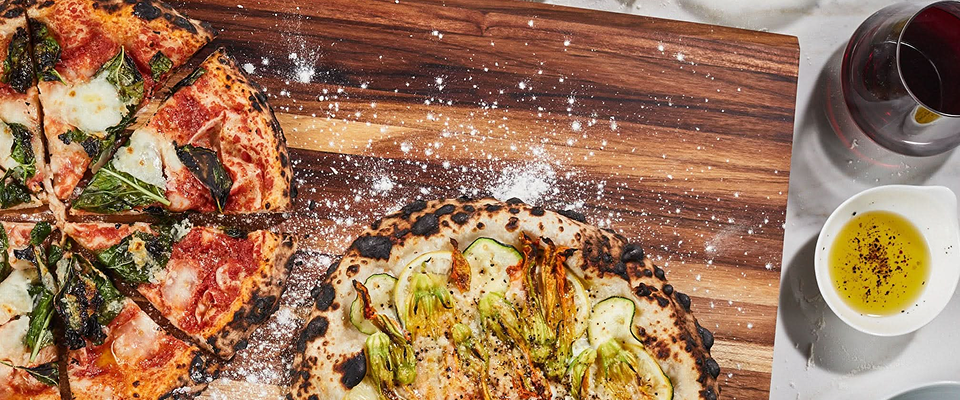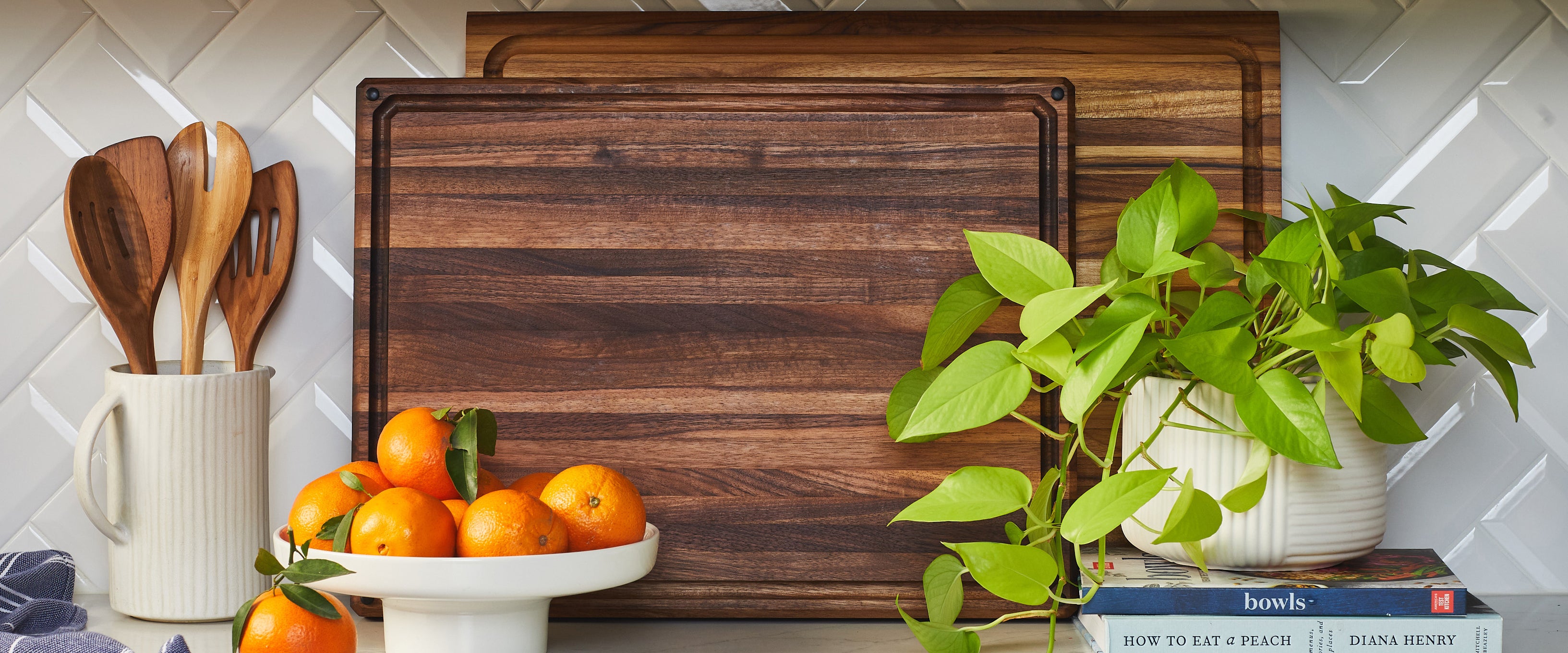Gifting has never been easier!
Perfect if you're short on time or are unable to deliver the gift yourself. Enter your gift message and select when to have it sent.

Edge-Grain Boards Made To Last
Edge-grain boards are constructed by aligning long strips of wood with the grain running horizontally, creating a strong, stable surface that resists warping and stands up to years of use. Lighter than end-grain boards but still thick enough to provide the durability you need for serious kitchen tasks.

Beautiful Build & Easy to Clean
The clean, linear look of edge-grain construction highlights the wood’s natural patterns, giving each board a simple yet refined style. They’re also easy to maintain, just hand-wash with mild soap, dry immediately, and oil regularly with either food-grade mineral oil or a mineral oil and beeswax blend to keep them in top condition.
Filters
An edge-grain cutting board highlights the beauty of the wood grain horizontally. It has a linear look and is typically what you picture when you think of a cutting board. These boards tend to be light yet durable, providing an affordable and low-maintenance option for your kitchen needs.
Edge-grain boards are crafted by bonding together long strips of wood, aligned by their edges. As a result, the wood is more susceptible to knife marks, but that just adds to the character.
They’re low-maintenance, tend to be more affordable, and more moisture-resistant. If you want something reliable, requires slightly less TLC than an end-grain board, and is easier on your wallet, edge-grain is your go-to.
Around 1 to 1.5 inches is ideal. This makes it thick enough to be durable without being too heavy to move or store. Edge-grain boards tend to be lighter than end-grain, so even a slightly thinner board still performs well for everyday use.
Edge-grain boards are cut with the grain’s edge so the wood fibers are aligned horizontally. End-grain boards are cut along the grain’s end so that the wood fibers are exposed and facing up.
Yes, typically edge-grain cutting boards are less pricey than end-grain cutting boards, as end-grain boards are more work to construct.
Hand wash with warm water and a gentle soap—then dry right away with a clean dish towel, before propping the board up to fully air dry. Use mild dish soap—harsh soaps with alcohol (like Dawn Powerwash) can strip the wood’s natural oils, causing it to dry out. Avoid soaking or putting it in the dishwasher. A regular coat of food-grade mineral oil keeps it moisturized and helps prevent cracking.
We recommend using a food-grade mineral oil and beeswax blend for an easy, all-in-one solution. Avoid cooking oils like olive, avocado, and others, as they can go rancid and damage the wood. Because edge-grain boards are lower maintenance than end-grain, we recommend oiling them every 3 to 4 weeks to keep them in optimal condition.